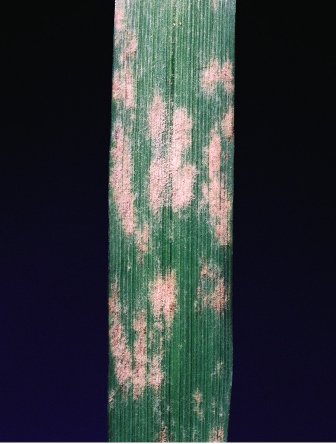Powdery mildew
Powdery mildew (PM) is caused by the fungus Blumeria graminis. It usually occurs in spring and autumn. It is normally a minor disease in NZ, only causing significant yield reductions under heavy infection.
Species affected
Perennial ryegrass, tall fescue, cocksfoot.
Identification
PM causes patches of fine, white-coloured fungus (mycelium) on leaves and leaf sheaths. Older patches appear fluffy with black pinhead sized fruiting bodies. Older leaves are infected before younger leaves and can turn yellow and die under heavy infection.
Spread
PM survives winter as a fungus on infected plants, stubble or hay. Air-borne spores produced in spring land on susceptible plants, causing new infections. Spores are also released after rain in autumn. Infection is worst in shaded areas with poor air circulation.
Prevention and management
Graze pasture to remove affected growth and promote fresh regrowth. Do not allow pasture to become overgrown.

Powdery mildew on a ryegrass leaf.

